And some slobbering drool made the performance even more interesting.
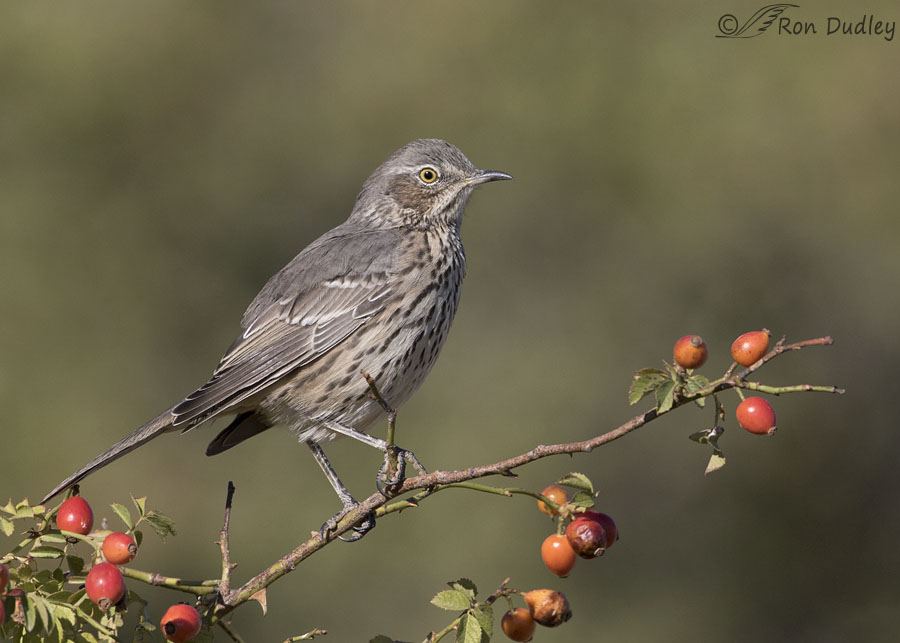
1/3200, f/7.1, ISO 500, Canon 7D Mark II, Canon EF 500mm f/4L IS II USM + EF 1.4 III Extender, not baited, set up or called in
I photographed this Sage Thrasher on wild rose two days ago. Some readers will likely recognize the perch as the same one the Northern Mockingbird had been using in yesterday’s post. The rivalry between those two birds and others for perching rights on the wild rose will likely be the subject of a future post.
Some might suspect that this branch is a set up perch but I assure you, it isn’t. The following 8 photos are sequential shots in a burst.
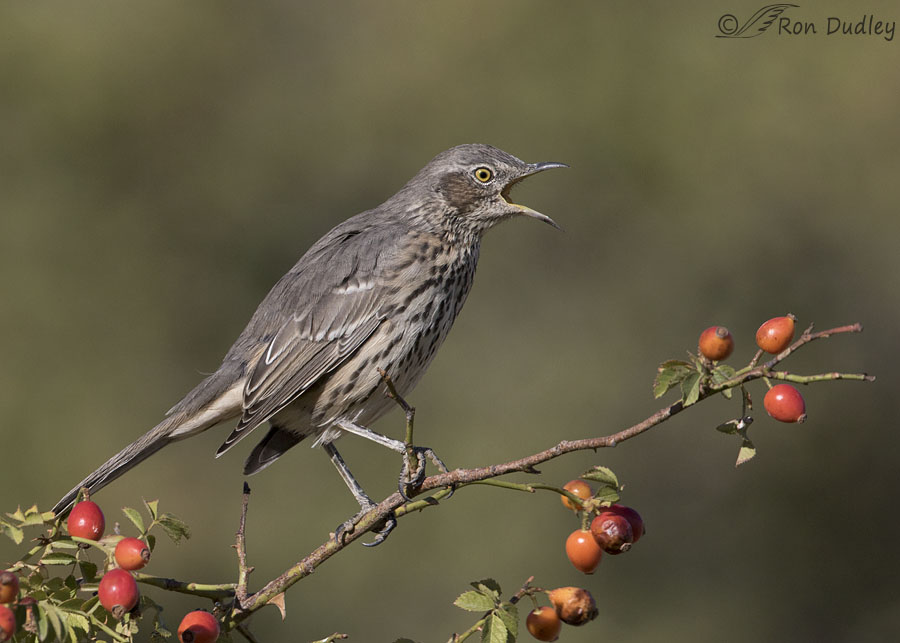
1/3200, f/7.1, ISO 500, Canon 7D Mark II, Canon EF 500mm f/4L IS II USM + EF 1.4 III Extender, not baited, set up or called in
Suddenly the thrasher began to retch. I figured it was about to regurgitate a sumac pit as I’d seen other thrashers doing earlier that morning and I was right. I’m not 100% positive that’s what it was but I’m pretty confident of it.
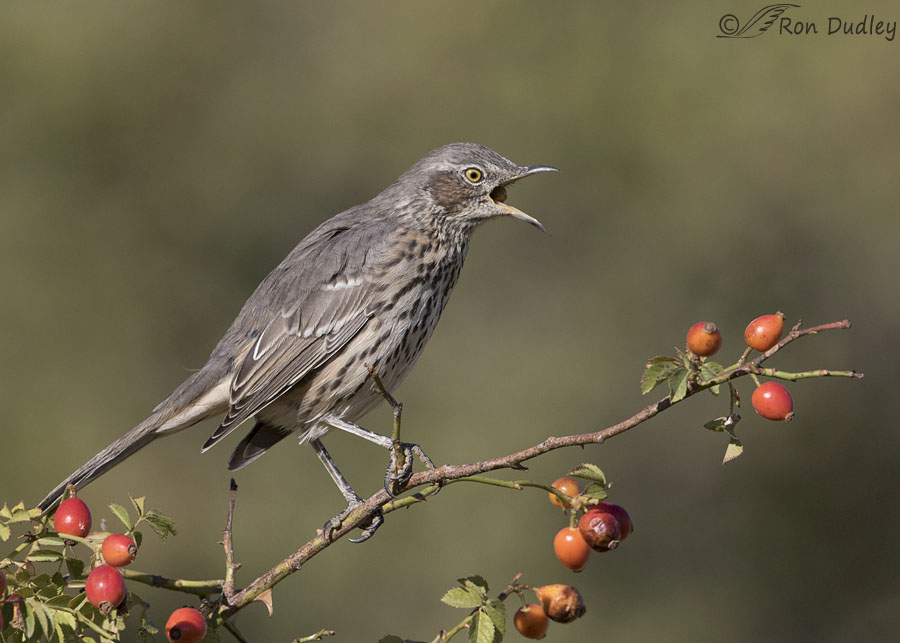
1/3200, f/7.1, ISO 500, Canon 7D Mark II, Canon EF 500mm f/4L IS II USM + EF 1.4 III Extender, not baited, set up or called in
Here we can just begin to see the pit in the back of the bird’s mouth.
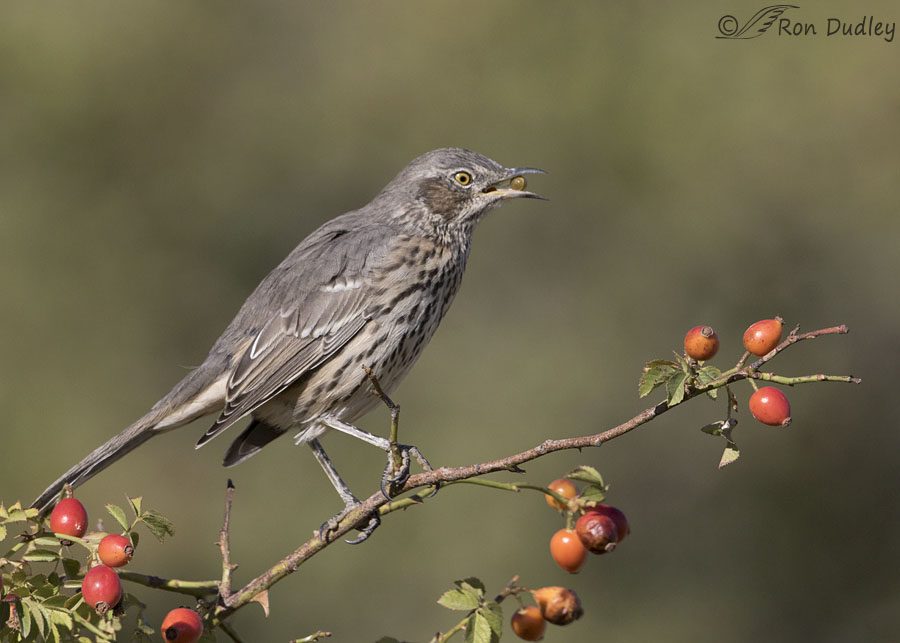
1/3200, f/7.1, ISO 500, Canon 7D Mark II, Canon EF 500mm f/4L IS II USM + EF 1.4 III Extender, not baited, set up or called in
The thrasher held it in its mouth for only an instant before…
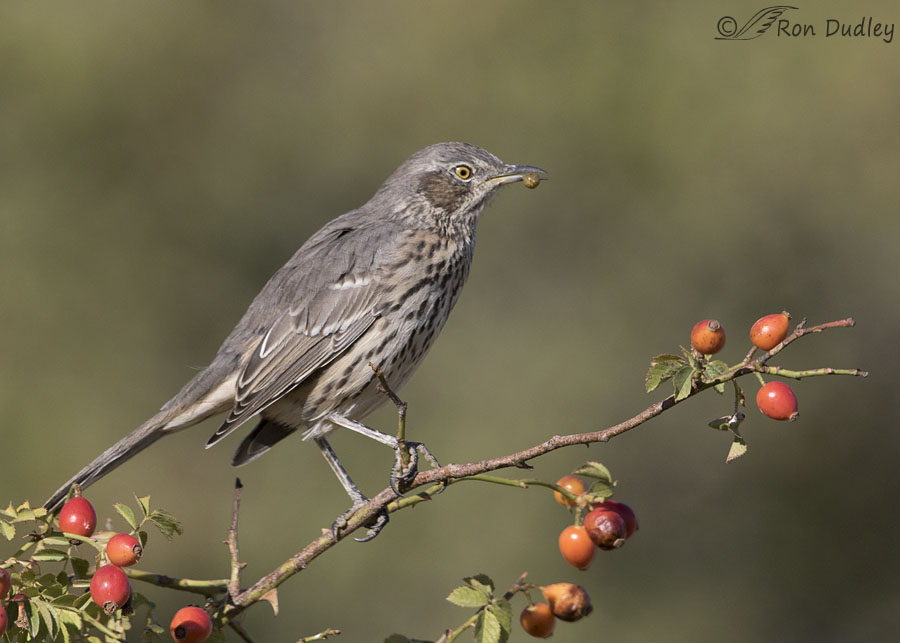
1/3200, f/7.1, ISO 500, Canon 7D Mark II, Canon EF 500mm f/4L IS II USM + EF 1.4 III Extender, not baited, set up or called in
deliberately dropping it over the side of its bill.
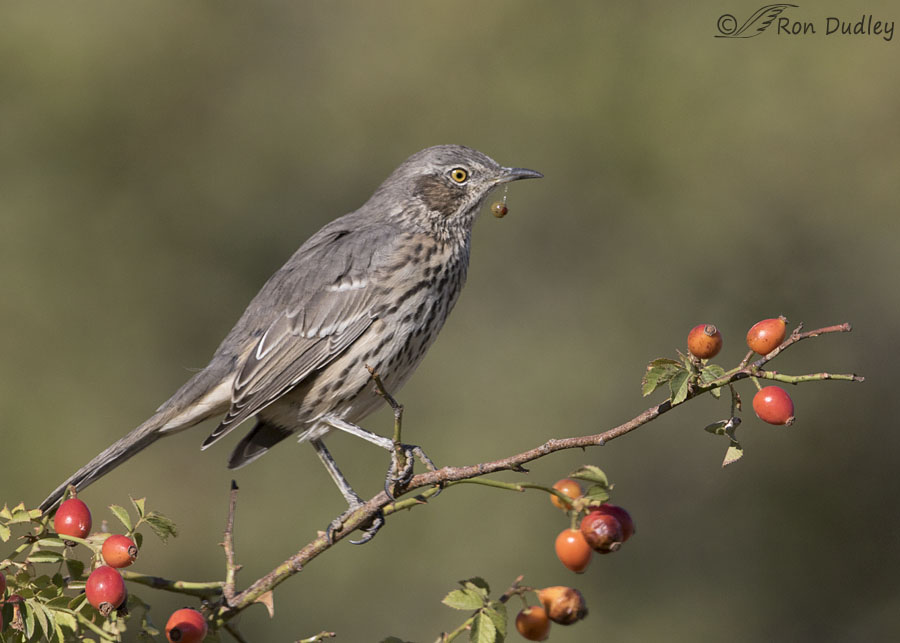
1/3200, f/7.1, ISO 500, Canon 7D Mark II, Canon EF 500mm f/4L IS II USM + EF 1.4 III Extender, not baited, set up or called in
But the seed pit was reluctant to leave because it was still attached to the beak of the bird by stringy mucus originating either in the crop or the mouth or both.
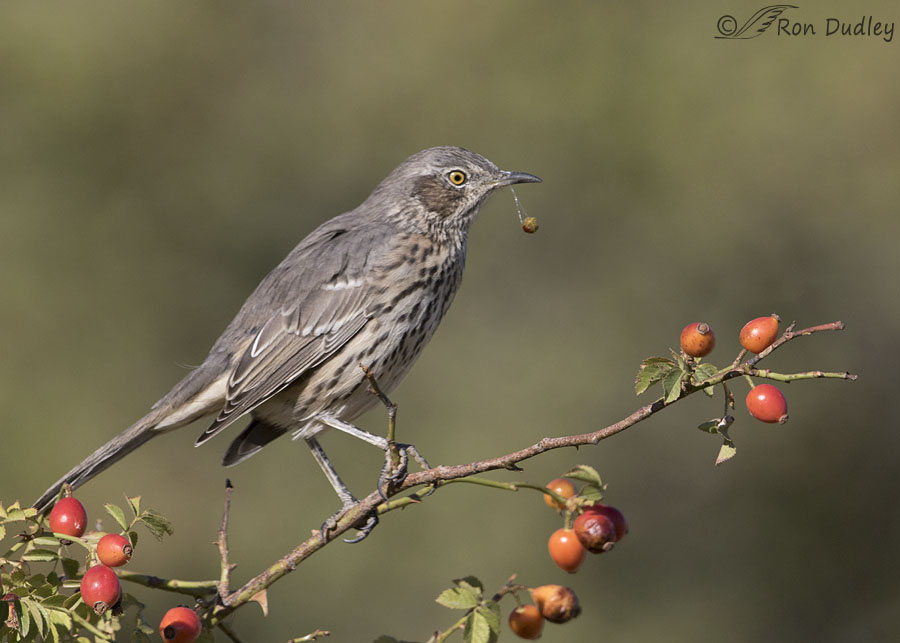
1/2500, f/7.1, ISO 500, Canon 7D Mark II, Canon EF 500mm f/4L IS II USM + EF 1.4 III Extender, not baited, set up or called in
For a moment it swung like a pendulum on the stringy mucus…
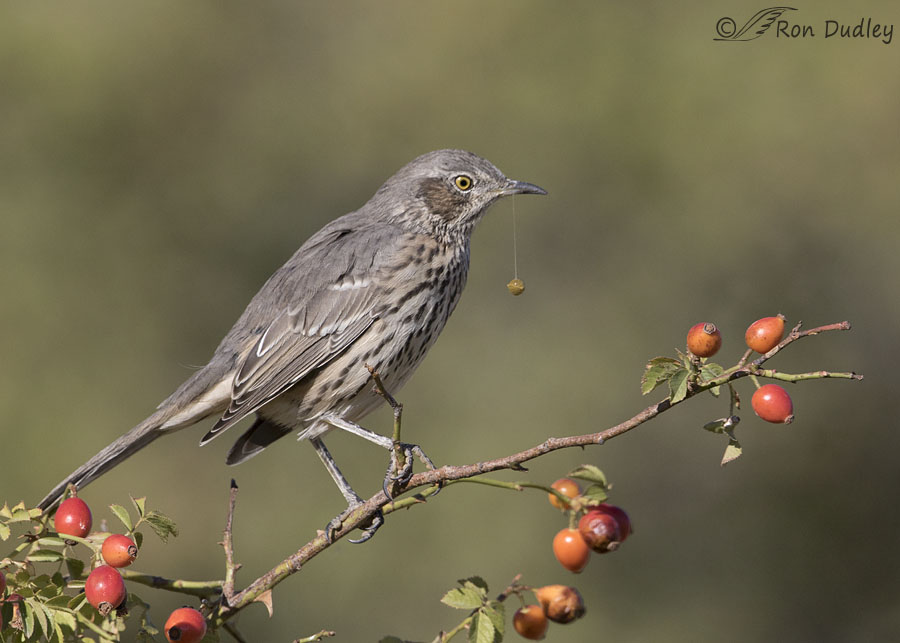
1/2500, f/7.1, ISO 500, Canon 7D Mark II, Canon EF 500mm f/4L IS II USM + EF 1.4 III Extender, not baited, set up or called in
before the mucus string stretched to its breaking point…
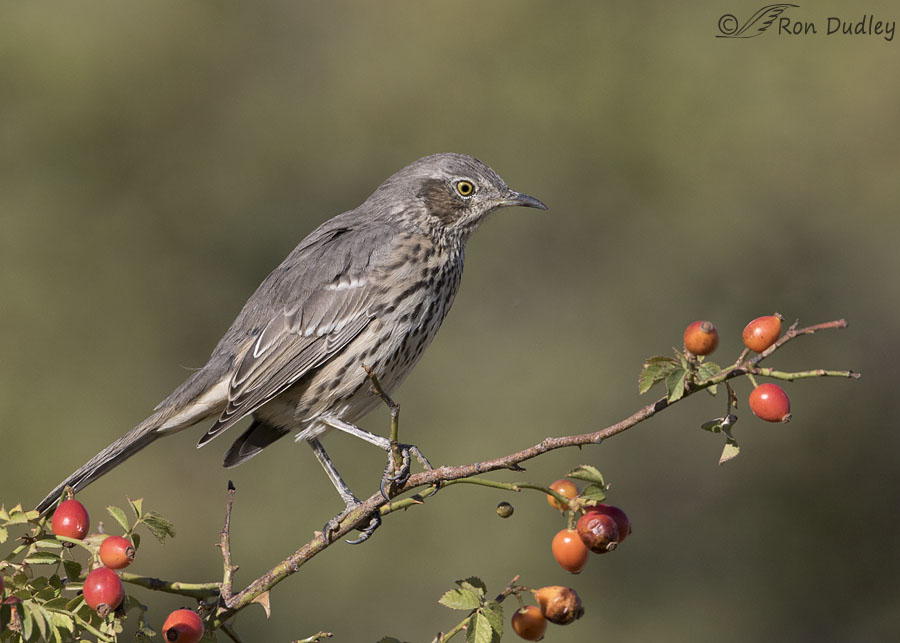
1/3200, f/7.1, ISO 500, Canon 7D Mark II, Canon EF 500mm f/4L IS II USM + EF 1.4 III Extender, not baited, set up or called in
and the pit dropped to the ground. Here it can be seen falling through the air just below the branch.
For my first few years of photographing birds I nearly always used to miss shots like these and damn it used to make me mad. When birds throw pellets or regurgitate something else the entire process is often, though not always, over in less than a second (this sequence of 8 photos took just 8/10ths of a second). I can’t tell you how many times I saw it happen through my viewfinder but hadn’t been prepared for fast action so I just sat there like a dumbass with my finger on the shutter button and watched it all go down without firing until it was too late. When that happened often enough I was highly motivated to change my ways.
The other problem I used to have was buck fever. When I’d see a bird beginning to throw a pellet I was instantly so excited that I’d either jerk my lens resulting in blurry photos or clipped body parts or my hands would shake a little (I have essential tremors which makes them shake in situations like this) with the same blurry results.
Now I recognize behavioral signals that nearly always precede these behaviors and I’m usually ready for it. And I rarely get buck fever any more (I think that comes with experience) so my success rate in these situations is much higher than it used to be.
When these behaviors occur a lot of other things can also go wrong. Birds have a habit of having their backs to you when it happens, their face can be in shade, there can be vegetation in front of the falling pellet or pit or everything can be soft because you don’t’ have enough light or shutter speed. But for this series most everything came together, including having a great perch, so if I’d screwed it up I’d have been kicking my butt for a week.
Repeated failure is great motivation to learn how to get it right.
Ron


Wow! Love the intensity in those eyes. Our Brown thrashers have that same intense look. Excellent series!
One hopes that Sumas berry was worth it. I can almost hear the cack-cack-cack while the berry is coming up and out (not sure if birds cack). Gross but entertaining and informative.
I think they’re “worth it” to them, Lyle. And unlike me they take the regurgitation in stride.
Yet ANOTHER fascinating, (and in parts beautiful) series. Definitely better out than in. It made me think of my mother insisting that if I swallowed the pips they would take root inside me and grow…
Thanks very much, EC.
Great series! First and last are just plain beautiful…love compodition and colors!!! Others are very interesting behavioral shots…all are winners….
Thanks very much, Patty.
Beautiful all round photos. Nice colors, light and setting and to top it off behavior too! I need to get out, it has been too long. Since school started I have been in a exhausted funk. Then last week add some dental issues to the mix and I have only wanted to lay around home reading.
I remember that funk well, April. So sorry about the dental issues. I wish you luck with them.
Lovely sequence, Ron. Nice to hear ”buck fever” can (sometimes) be overcome. And once again, we can learn as much, or more, from your written word as from your lovely images. Please keep up your excellent work. Your fans, even those like me who rarely comment, look forward to your blog EVERY DAY!
You’ve said some very nice things here and I appreciate them, Thomas. Thank you.
I guess I just don’t get out enough, still have at times Buck Fever! Not if they are perched or standing, but when they are flying, or stooping, just doing things that make my blurry cut-off shots look like I’m really a rank beginner or just plain dumb.
Your shots are fantastic, just superb! The profile is really beautiful.
It took me years to get past having buck fever and it was a slow, gradual process, Dick. Give it some time…
Very interesting series, though it is a bit much before breakfast. I am surprised at how fast this behavior happened. If your branch were a setup, would that Thrasher really have come in to land on it so it could throw the pit up for you? That just strikes me as highly unlikely.
Birds would come to that setup pretty easily, Susan. It’s the tallest branch on the wild rose so they love to perch there – plus there’s that “bald” spot on the branch where they can easily perch. They did it again this morning.
Nifty series, Ron! I’m incredibly grateful that you share not just your talent, but also the path you have taken to get here.
And wasn’t Buck Fever on Gunsmoke once? 😉
Marty, the only “buck” I remember from Gunsmoke was Buck Taylor who played Newly Obrien…
Great series, Ron 🙂 Interesting how their systems know how to get rid of what’s not digestible and leave the rest! “Time in” does certainly help with “Buck Fever” !
That darned buck fever used to drive me nuts, Judy. I could be as calm as a cucumber and then in a nanosecond I wasn’t…
Outstanding series Ron. You can almost picture it happening live. You certainly have learned how to get shots like this and for the rest of us we are definitely envious. I just turned 80 back in April and have only been interested in wildlife photography for the past four or five years so I don’t think I am ever going to master this in the time I have left. As you mentioned, after doing this for a while you do get to where you can actually tell what the bird’s next move will be. Now you just have to learn the skills to be able to react correctly. Great series. Thanks for sharing.
Everett Sanborn
Prescott Arizona
Everett, I’m sure you “have time” if you work hard enough on it. Thank you.
Marvelous series Ron! Thanks for sharing!
Charlotte
Thanks, Charlotte.
Such an exciting series of photos. I love the fact that the most sought after perch still retains berries, a clear sign that birds are competing for the right to own that perch and bush by protecting the fruit. Thank you for the lovely images and always delightful corresponding account of challenges met. Your email is my first read in the morning. Thank you for all you do to brighten my day. I hope you are feeling much better!
Thanks for the very kind words, Melanie.
Actually these are wild rose hips and the birds weren’t eating them.